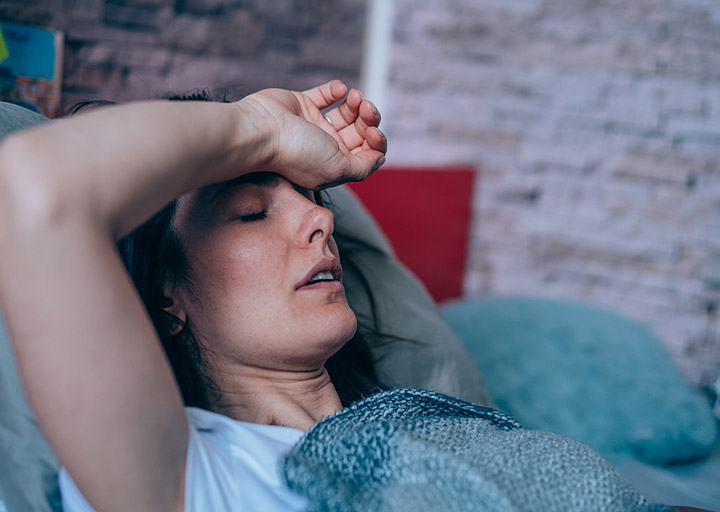If you’ve noticed that you are aware you’re dreaming while you’re asleep, or that you can control what happens in your dreams, you may be lucid dreaming. Lucid dreaming is quite rare, so consider yourself lucky if you’re able to control what happens while you’re asleep!
Read on if you’re interested in learning more about the benefits of lucid dreams, how they work, or even how to start having them yourself.
Editor’s Note: The information provided should not be considered a substitute for professional advice. Please consult a sleep doctor or other medical expert if questions related to your health arise.
Key Takeaways
- People who have lucid dreams are aware they are dreaming, and they can learn to control what happens in the dream.
- Lucid dreams typically occur during the rapid eye movement (REM) stage of sleep.
- Some people can train themselves to have lucid dreams.
- Reports of lucid dreaming date back to the 4th century BCE.
- Children, adolescents, and people with narcolepsy are more likely to have lucid dreams.
- The research is mixed at this point, but some studies suggest that lucid dreams may strengthen self awareness and help prevent nightmares.
What is Lucid Dreaming?
Lucid dreams happen when you’re aware that you’re dreaming. They might feel more vivid than a normal dream, and you might even be able to control what’s happening as you dream. Half the population has at least one lucid dream in their lifetime, but frequent lucid dreaming is more rare. Only about one in five people have at least one lucid dream per month.
Records of lucid dreaming date all the way back to the days of Aristotle in the 4th century BCE. In fact, there are reports of South Asian cultures practicing ways to lucid dream for thousands of years.

What Causes Lucid Dreaming?
Scientists are not entirely sure why lucid dreams happen. Research suggests that a shift in brain activity during REM sleep pushes you closer to waking up, and may cause lucid dreams. Research also suggests that sleep disorders like narcolepsy may be correlated with frequent lucid dreaming.
Curious about your sleep cycle? Read The Complete Guide to Your Sleep Cycle to learn all about the neuroscience behind sleep
How to Know if You’re Lucid Dreaming
Here are a few key ways you can tell you’re lucid dreaming:
- You’re consciously aware that the images in your head aren’t real.
- You can control the action in your dream and change the story’s trajectory.
- The dream feels visceral and real.
- You’re probably doing something active like running, swimming, or flying.
Who’s Most Likely to Have Lucid Dreams
Scientific evidence isn’t conclusive, but here are a few groups that tend to have more lucid dreams than average.
- Children and adolescents.
- People who have a larger prefrontal cortex, the part of the brain that controls reasoning and memory retrieval. These people also tend to be creative and self aware.
- People with narcolepsy.
- A 2019 study suggests that people who play video games may be more likely to have lucid dreams.
How to Lucid Dream
A popular technique for learning to lucid dream is the mnemonic induction of lucid dreams (the MILD technique). It was developed by psychophysiologist Stephen Laberge and involves setting intentions. To practice MILD, wake up after sleeping for five hours. Then, try to remember your most recent dream. Next, repeat the intention: “The next time I am dreaming, I will remember that I am dreaming.” With enough practice, MILD could lead to lucid dreaming and dream control. A dream induction study by Dr. Denholm Aspy suggests the MILD technique does work.
Another popular lucid dreaming technique involves frequent reality checks. To implement this technique, ask yourself multiple times throughout the day whether you are awake. Supposedly, asking yourself this question regularly in a waking state will eventually allow it to seep into your dreams. When you ask the question while asleep, you may trigger a lucid dream.
How to Wake Up from a Lucid Dream
If you don’t want to wait to wake up naturally, you can try calling out for help within your dream, blinking rapidly in your dream, falling asleep in your dream, or reading something in your dream. These activities may activate parts of the brain not used in REM sleep, though further research is necessary to confirm it.
Lucid Dreaming Benefits
Lucid dreams can have health benefits. I listed some common perks below.
although there may be benefits, the data on LD is mixed and requires more research
- Some research suggests that practicing simple motor skills during lucid dreams correlates with better motor skills in real life. So, dreaming of yourself shooting a winning basket while asleep might actually help you score in real life.
- Lucid dreams can potentially help you work through anxiety and PTSD by giving you total control over a situation. Practicing a scary interaction in a sleep state can help make it easier when awake. If you have anxiety or PTSD, consult a mental health professional.
- Lucid dreams may help you engage in creative problem solving. Sometimes, characters in your dreams can help you find insight you didn’t have on your own.
- Though further research is necessary, lucid dreams might increase self-awareness. Lucid dreams may allow people to connect with their subconscious in ways they can’t usually do while awake.
Lucid Dreaming Risks
There are a few drawbacks to lucid dreaming you might want to consider before trying to induce lucid dreams or increase your lucid dreaming frequency.
- Trying to induce a lucid dream may disrupt sleep, though further research is necessary.
- Lucid dreaming may negatively impact sleep quality and make you feel more tired in the morning.
- People with certain mental health disorders may find that some types of dreams blur the line between fantasy and reality. It can make it hard to tell what’s real when they wake up.
- Some people may take supplements to increase the chance of lucid dreams. If you’re planning to do so, consult with a health professional first.

Vivid Dream vs Lucid Dream
Lucid dreams are very memorable and vivid, but vivid dreams are not always lucid. If you remember your dream clearly when you wake up, but were not aware that you were having a dream while you were asleep, you had a vivid dream, not a lucid dream.
If you’re interested in remembering your non-lucid dreaming better, consider using a dream journal in the morning. Recalling your dreams right after waking up can help you remember them and notice recurring themes. Notice you keep having the same dream? Check out what these common dreams may be telling you.
Sleep Paralysis vs Lucid Dreaming
Sleep paralysis and lucid dreaming both occur during REM sleep. During sleep paralysis, a person wakes up while they’re still in REM sleep. As a result, their body is momentarily paralyzed. People with sleep paralysis may experience frightening hallucinations during sleep paralysis.
In contrast, lucid dreamers may be aware that they’re in a dream state, but may not feel physically paralyzed because their conscious mind is not aware of their physical bodies while asleep. Instead, they are simply aware that they are dreaming.

Natural vs Induced Lucid Dreaming
Natural lucid dreams are very rare and occur infrequently. But some people want to induce lucid dreams. If you’re interested in learning how to have lucid dreams, consult a sleep specialist.
Bottom Line
Lucid dreaming occurs when the person is aware they are in a dream, and it typically occurs during REM sleep. Lucid dreaming is most common among children, adolescents, and people with narcolepsy. It’s also associated with a higher level of self awareness and creativity.
There are potential benefits of lucid dreaming, including nightmare prevention, but there are also a few drawbacks. Some people who lucid dream frequently have difficulty falling asleep. If lucid dreaming doesn’t come naturally to you, there are techniques you can use to increase their frequency. It’s important to remember that lucid dream research is not conclusive, and scientists may find contradictory results as they continue their studies.
FAQs
Are lucid dreams good?
Lucid dreams are not necessarily good or bad. Some people find lucid dreams increase their self-awareness, creativity, and confidence. Others find they disrupt sleep quality.
Is lucid dreaming dangerous?
The risks and dangers of lucid dreaming are not completely understood, but Lucid dreaming has valuable therapeutic and recreational potential.
Is lucid dreaming real?
Not part of reality, but they are a type of dream people can have. During lucid dreams, people are aware that they are dreaming.
Can you remember lucid dreams?
Yes, most people vividly remember their lucid dreams.
People who have frequent lucid dreams may have a more active prefrontal cortex. A 2018 study explains the science in more detail. Some people with sleep disorders like narcolepsy may also have more frequent lucid dreams. If you feel tired during the day and have lucid dreams regularly, you might want to consult your doctor.
When does lucid dreaming happen?
Lucid dreams typically occur during rapid eye movement (REM) stage sleep. During this sleep stage, your brain is more active and “awake.”

